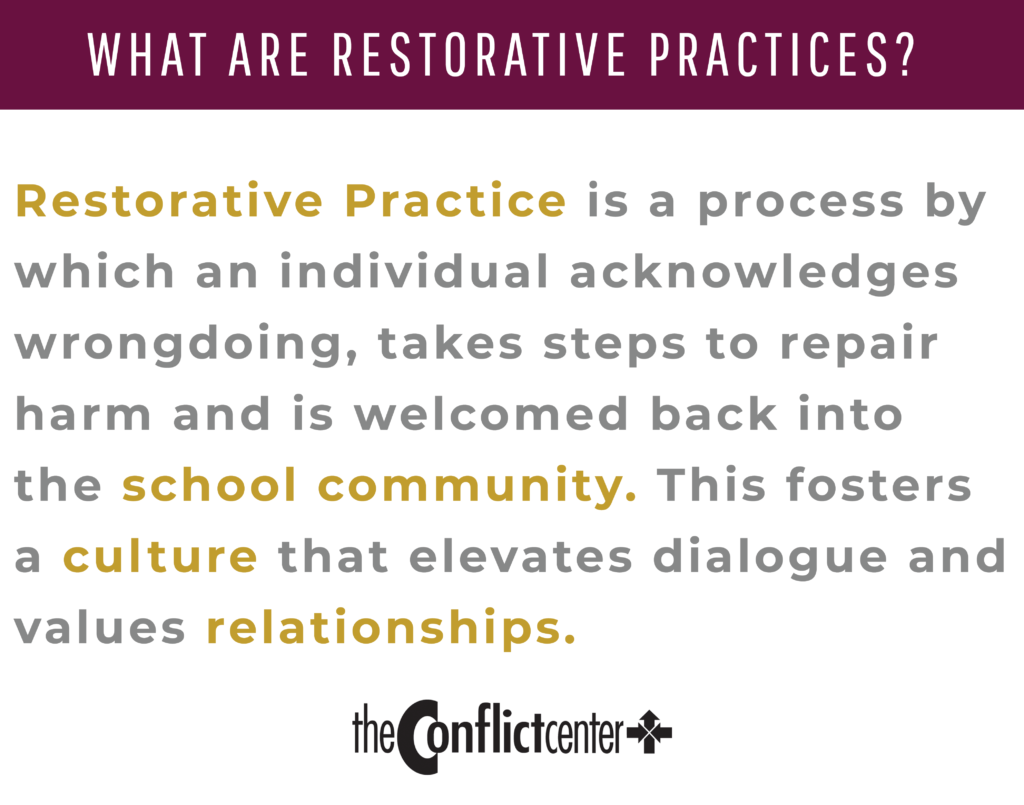Restorative Practice Programs
Restorative Practices is a philosophy, not a curriculum focusing on building positive relationships and providing opportunities for community members to take responsibility for their behavior while remaining connected to the community. An intentional Restorative approach fosters a compassionate, relationship-centered culture.
Why Restorative Practices?
Research continues to demonstrate the beneficial outcomes of using restorative practice techniques in schools, rather than traditional punitive approaches, in response to student misbehavior. These include decreasing student delinquency, better academic outcomes, and improvement of overall school climate.

Bring us to your school!
Further Your Restorative Practices Education

Restorative Practices in Action
- Our classes are offered in two formats: 6-weeks (2 hours per class) or on two consecutive Saturdays (6 hours per class).
- Six week classes cost $180. Two consecutive Saturday classes cost $200.
- Class size averages 5-12 participants to maximize sharing time.
- Classes are offered monthly.
For more information, please contact Rachel Protentis at Rachel.Protentis@conflictcenter.org or call 303.865.5633.
